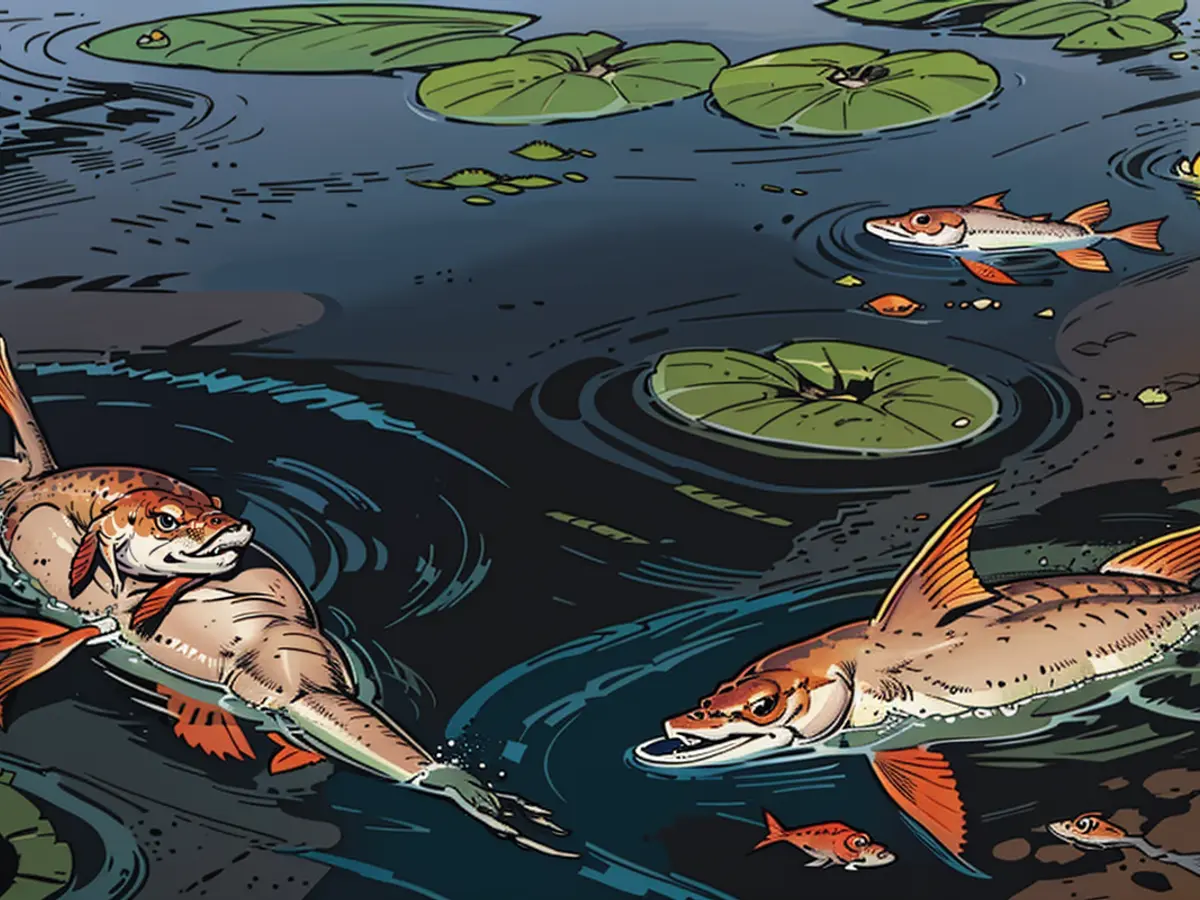Nature or Surroundings - Rising presence of toxic golden algae causing deaths of fish in the Oder River.
Down by the Oder River, there's been a recent discovery of dead fish. This happens two years post a major environmental incident on the border of Germany and Poland. The villain here is none other than the hazardous golden alga, the same perpetrator from the summer of '22 that caused a mass fish death. The Brandenburg State Environment Agency has a meeting scheduled for Wednesday to discuss follow-up measures. They're not the only ones concerned; Poland is also trying to prevent this golden menace from expanding its territory.
As eyewitnesses spotted on Tuesday, there were many dead fish, including some 60-centimeter-long zander and pike, amidst water lilies. The deceased mussels and snails also bobbed on the surface.
The Brandenburg State Environmental Office confirmed, on that same evening, that for several days now there'd been a dramatic growth of algae, specifically the Golden Alga, Prymnesium parvum. Earlier reports of dead fish had been received by the agency. They bumped up the alert warning system to level 3. This means they're assuming a bloom of Prymnesium parvum and it dictates who's taking what action.
Factors like high salt concentration, low water levels, extreme heat, and the lethal toxin from golden alga were pinpointed as chief suspects behind the 2022 Oder River fish kill.
The State Environment Office also shared that the anticipated escalation factor from heightened water levels over the weekend didn't materialize. Salt content, measured through electrical conductivity, was still high. This is a telltale sign of the salinity levels. Additionally, primary measurements like pH level and oxygen followed the typical pattern of an algae bloom, so the office warned, as a precautionary measure, nobody should use any outlets to the Oder-Spree Canal.
The Polish Ministry of Environment declared way back in May that they planned to increase the water flow in order to curb the expansion of golden alga. The authorities had released some of it from the Gleiwitzer Canal.
Read also:
The golden alga, responsible for the environmental disaster in the Oder River, was also present two summers ago, leading to a mass fish death. The Brandenburg State Environmental Office is working closely with Poland to prevent this harmful alga from spreading further. The death of various fish species, including zander and pike, and even mussels and snails, has been observed in the river. The Golden Alga, Prymnesium parvum, has contributed to the high salt concentration and low water levels, exacerbating the situation. The Polish Ministry of Environment has taken steps to increase the water flow to curb the expansion of golden alga.








